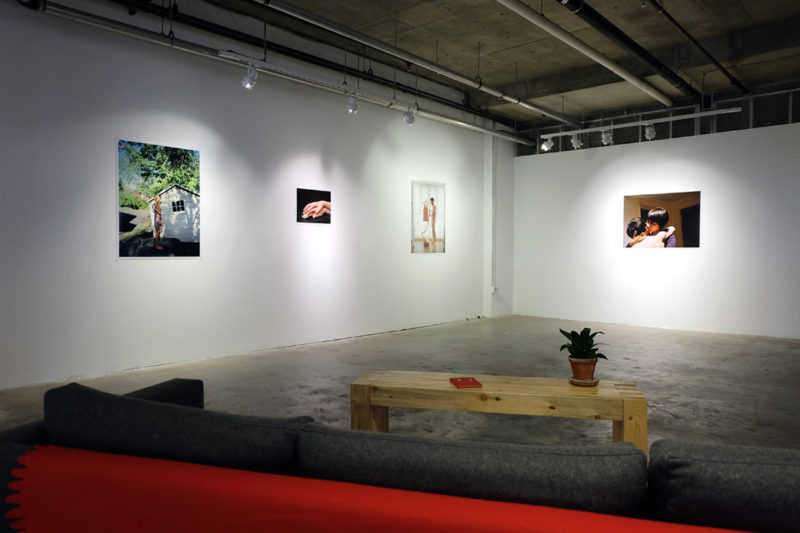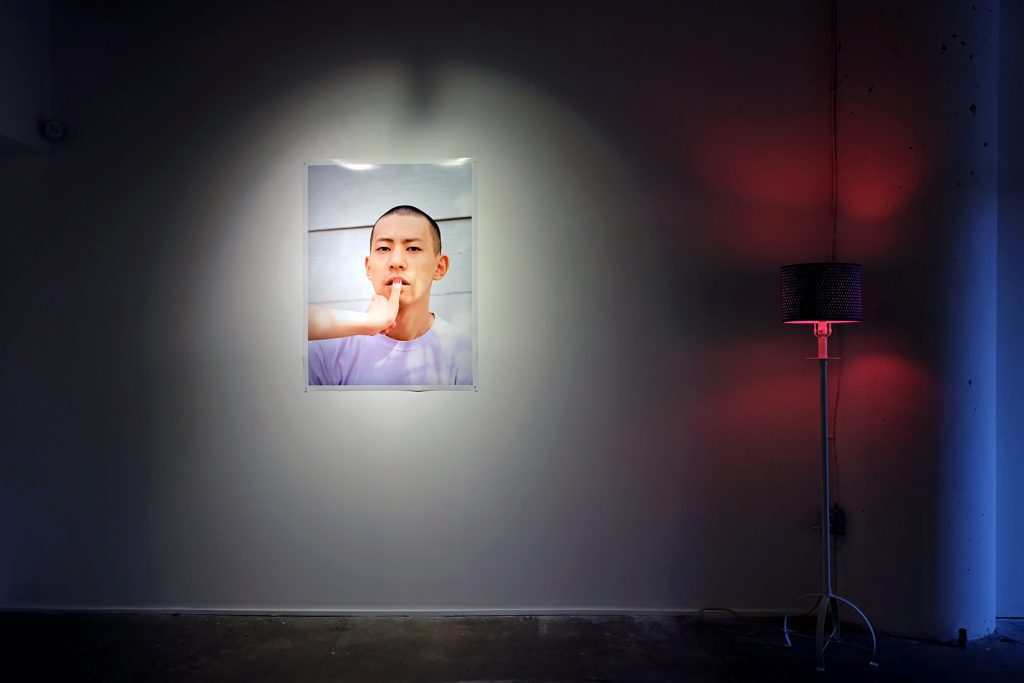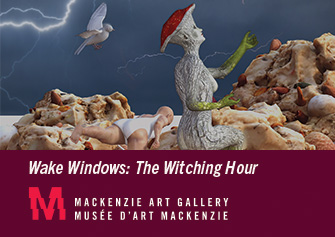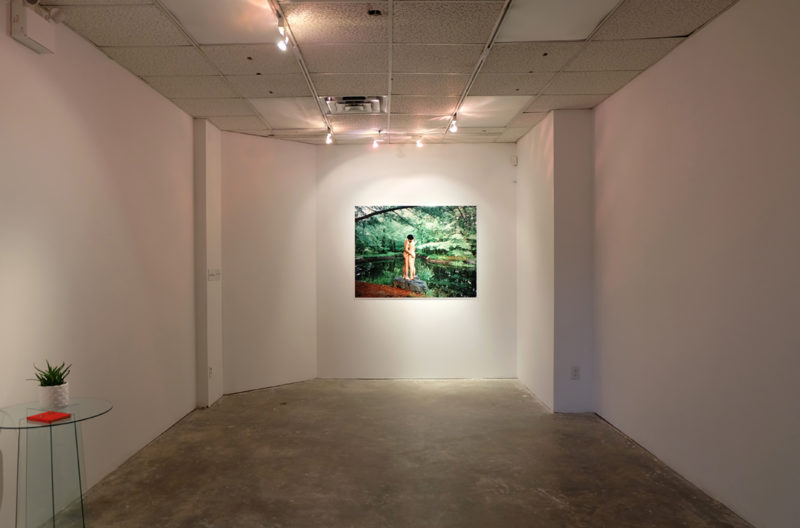Performing Intimacy: Pixy Liao at Centre A
13 March 2021By Nawang Tsomo Kinkar

“But it’s so intimate,” explained my friend about a community theatre group.
Dazed by her reasoning, I remember responding, “What’s wrong with intimacy?”
And then felt unsure myself.
What is wrong with intimacy?
When I first saw Pixy Liao’s The Hug by the Pond (2010), it struck me. The photograph showed two naked bodies on top of a large rock wrapped in a gentle embrace, surrounded by an evergreen pond. A quiet image. “How intimate”, I thought.
Almost a year later, I would come across this image in an exhibition titled Experimental Relationship (for your eyes only, or maybe mine, too) at Centre A in Vancouver as part of the 2020 Capture Photography Festival. Presented online, amidst the COVID-19 pandemic, I look at the same photograph now on my laptop screen and it’s no longer quiet. There is something painstakingly wonderful about revisiting an image. The photograph remains the same, everything else outside of it, however, has changed. Liao and her partner, Moro, share a hug in a forest—the embrace is gentle, yet now there is a certain desperation in the exchange. I can see a new Moro, one who is more contemplative, holding the cable release anticipating the moment at which to click the shutter. I sense a natural tension in Liao’s bare feet, her heels reaching high—longing. The narrow space between their fragile bodies, is like a window into their relationship. I can imagine these sensations reverberating through the forest, creating a slow rustle between the leaves and causing an invisible ripple upon the water. The image has become anything but quiet.
I used to associate intimacy, particularly the romantic kind, with privacy. A practice shared between two people, inconspicuous from the rest of the world. When my dear friend explained to me her reservations about the community theatre program, I thought to myself, “Doesn’t all performance ultimately stem from intimacy?” An intimate look at oneself through another? After following Liao’s work for some time, I’ve grown to understand Experimental Relationship as a series of self-portraits. The ‘self’ is not only a depiction of Liao, the artist. The ‘self’ is not simply a portrait of a couple. Rather, the ‘self’ that Liao creates is an entity made up of both the artist and the muse, the photographer and the model. Pixy and Moro. PixyandMoro. One as the extension of another. And vice versa.
The glorified concept of a muse as something to be looked at, examined, and decided upon, (as opposed to the idea of an artist who examines, decides and ultimately is ‘in-charge’) falls short in Liao’s work. In Experimental Relationship, these conventional roles are interchangeable and offer a complex exploration of the artist-muse dynamic. In Japanese Room II, (2015) and Electric Head Massage (2017), it is once again Moro, cable release in grip, who determines the moment of the photograph. On one hand, Moro is the muse, as seen in Hush, Baby (2010) and You don’t have to be a boy to be my boyfriend (2010). On the other hand, through the use of the cable release and therefore his control over the camera, he also plays the role of the artist. To a certain extent, he is an artist—if not the artist. Simultaneously, Liao also performs as the muse. In Electric Head Massage (2017) she poses on top of a desk—a nude Moro in between her knees—hand on his chin, and lamp overhead as she peers back at him; all of this I later perceive as a play on the words behind them.

Curated by Henry Heng Lu, along with a selection of photographs taken since 2010, the exhibit also features three short videos and an artist book. PIMO Dictionary is a collection of words inspired by a mash-up of Mandarin, Japanese, English, and slang terminology—and, maybe more significantly, a cross-cultural examination of a love language. The absurd and intriguing home videos are a quirky addition to the exhibit. They appear humorous at first, but later makes us question, “What exactly is it that is so funny?” Despite the intimacy that Liao displays in her work, the book and the videos reveal a humour we are not fully understanding—a joke we’re not privy to. Instead, they make us back-track to the photographs in the exhibit, and spend a few more seconds looking at Touching Knees (2015), Golden Mouse (2014) and Jello (2015)—seemingly small moments, yet significant even as stand-alone images. It is here where our gaze is held more firmly, not wandering or gently guided. The vulnerability in these, unlike the rest, is tightly framed and confrontational.
I take another look at Some words are just between us (2010), the most cinematic image in the selection, and I get a different glimpse of intimacy: the almosts, and the barely there, the whispered words, and the slow passing of time. Liao invites us into their intimate relationship—a display of affection, a secret language, a theatrical performance—and still leaves room for mystery, words left unsaid, and actions misunderstood. I think back on the conversation with my friend and I wish I had reassured her instead. There’s nothing exactly wrong with intimacy. You can show it all and still manage to reveal very little.
Experimental Relationship (for your eyes only, or maybe mine, too) ran from April 3 – December 31, 2020 at Centre A: Vancouver International Centre for Contemporary Asian Art in Vancouver, BC.
Feature Image: Installation view of Hush Baby, 2010 by Pixy Liao. Photo courtesy of Centre A.




